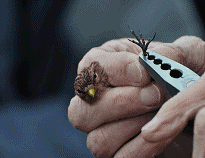
There has been a very welcome increase in the number of Twite birds at
Numbers are said to have swelled thanks to the flower-rich five hectare meadow planted on the edge of the quarry site, which provides the young Twites with the sorrel seeds they need.
Now, it appears that there is a 60 plus-flock in the wider area around the quarry, an amazing increase from the 10 birds seen in summer 2014.
The ‘red-listed’ Twite (Linaria flavirostris) has become a rare bird in England, breeding in only a few small pockets in the South Pennines, including Dove Holes quarry near Buxton. Last summer, Cemex working with the Royal Society for the protection of birds (RSPB) put aside a five hectare site next to the breeding area of the birds, and planted a flower mix that would provide exactly the right food for its young.
This autumn it was decided to ring as many Twites as possible in order to learn about the ecology and demography of this isolated population and see if the Pennine birds fly south and mix with Twites on the south east coast. Over 40 birds were ringed by George Hudson, RSPB volunteer and Jamie Dunning, ringer and leader of research group
“For ‘twitchers’ these are exciting times. The increase in the Twite population is great news and shows what can be done to stop a species close to extinction. The ringing has already shown results with a Derbyshire bird sighted recently in Thornham harbour in Norfolk confirming that the populations do mix,” said Dunning.








